Routing Using Call Routing Rules (formerly Skill Routing Identifiers) in Netsapiens
This articles provides a step-by-step guide on how to use routing by utilizing the Call Routing Rules (formerly Skill Routing Identifiers) feature on Xima CCaaS.
Article #: 113
How To: route calls based upon a Netsapiens DID
Similar questions: route calls based upon a Netsapiens DID, route via DID on Netsapiens, route via DID/DDI on Netsapiens, route via DDI on Netsapiens
Purpose: If your customer has multiple DIDs, we can route using the Xima CCaaS Call Routing Rules (formerly Skill Routing Identifiers).
This will allow you to directly drop the calls into a Skill rather than having to go through another auto attendant and selecting a digital action to be transferred to your Skill.\
To use Call Routing Rules (formerly Skill Routing Identifiers), follow these steps:
Platform Steps
- Log in to the Netsapiens portal
- Navigate to “Inventory” on the top right-hand side
- This will list out all of the DIDs available on your system

- Click the DID you would like to route to a Skill within Xima CCaaS
- In this example, I am using extension 6000, which was set up previously
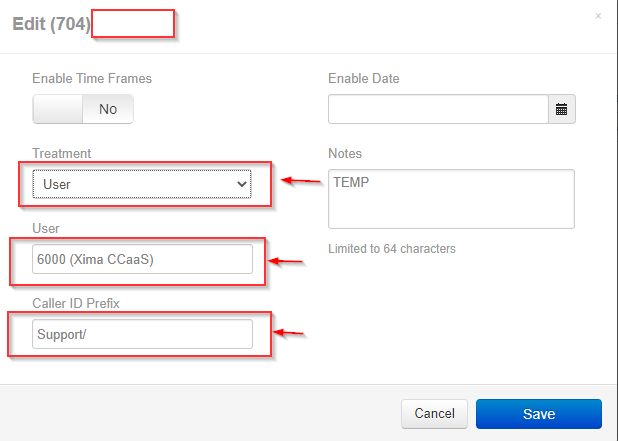
- A new Edit window will appear
- Under the “Treatment” tab, select “User”
- Under the “User” tab select your
<Xima Extension>- In this example, I am using extension 6000
- Under “Caller ID Prefix”, type in the name of the skill you want to route to (i.e., support, sales, etc.), and then add a slash to the end of the name
- NOTE: This slash is important because it indicates to Xima CCaas that it is going to go to a skill group
- This name will function as a Tag
- Once that is done, click “Save”
- The next step is to enter the “Caller ID Prefix” or Tag, into the Skill Routing Identifier field
- This field is found within the Xima CCaaS Admin Portal
Xima CCaaS Web Portal Steps
-
Open the web portal for your instance of Xima CCaaS
-
Navigate to Call Routing
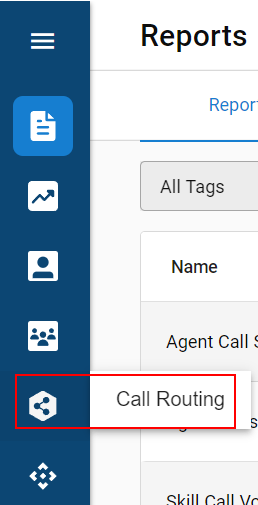
-
Within the new menu, select the + symbol to create a new Call Routing Rule

-
Configure the following within the new menu:
-
Routing Rule Name
- This name can be anything and is meant to help you quickly edit your rules later
-
SIP Header
- Within Netsapiens, this is most commonly From
- You can select anything from the dropdown menu, and even put in your own custom header
-
Matching
- Recommend using Contains to best match the platform's naming
-
Value
- The Caller ID Prefix that was created in the steps above
-
Destination
-
Select the Xima CCaaS Skill that you would like to send the calls to

-
-
-
Select Done
-
Once all Call Routing Rules are configured, select Make Live
What if a call comes in and no rules are matched?
There are certain circumstances where none of your Call Routing Rules will match a call's SIP Headers. You can set up a “Default” skill group to have these calls routed to it. By default, this is set to “No Skill” so you will need to manually set this up upon initial setup.
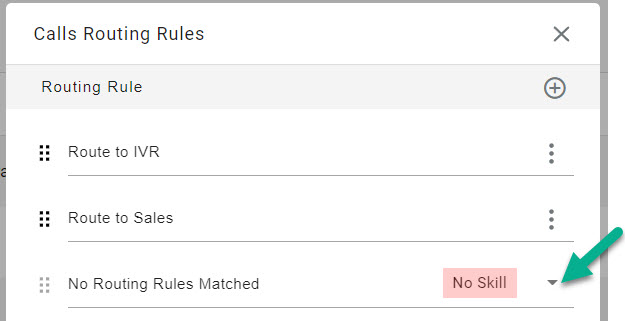
If no rules match and your default isn't set up your calls will come into the Contact Center and immediately be disconnected. (The system doesn’t know where to send them)
Xima CCaaS Admin Steps (Deprecated)
- Open up the Admin Portal on Xima CCaaS
- Navigate to Contact Center Configuration > Skill Management
- Select the Skill that you want calls routed to
- If the Skill is not yet configured, please follow this guide to set it up
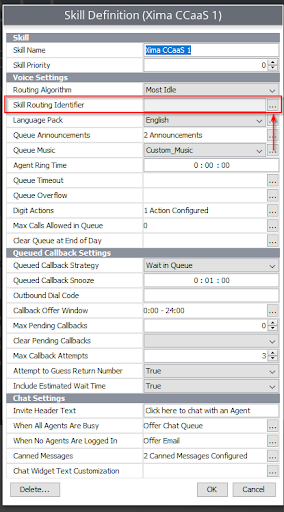
- Go to the Skill Routing Identifier field, which is located in the "Voice Settings" section, and click on the associated ellipsis
- A new window called “Skill Routing Identifiers” will appear, click Add
- A new window called “New Skill Routing Identifier” will appear
- Type in the same name that you entered in the “Caller ID Prefix” field on the Netsapiens portal (i.e., support, sales, etc.) into the text field
- NOTE: Do not include the slash in the name here
- Example below:
- NOTE: Do not include the slash in the name here
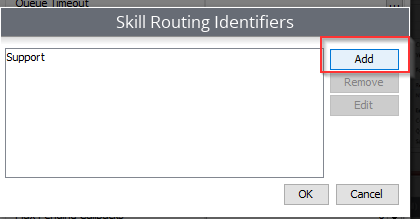
- Click OK and then Save to exit the configuration
- Finally, make a test call to that DID to make sure the calls are routed to the appropriate locations
Updated about 2 months ago
